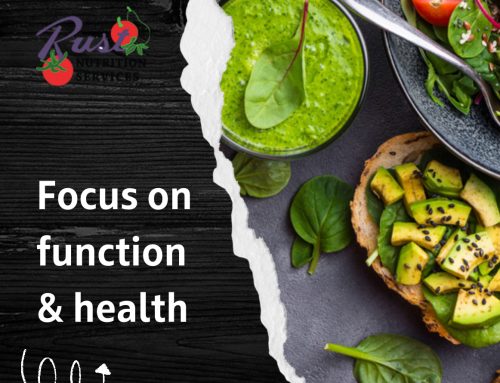This really isn’t news to many, but cooking at home is good for your health. Cooking at home through the week will likely result in better food, more nutrients, less calories and less sodium than eating out too often. It also can heighten the family’s awareness about where food comes from and tune you into your body’s hunger cues.
These key points lead to healthier eating:
- Eat more vegetables
- Consume ‘good fats’ (olive oil, canola oil, peanut oil, nuts, olives, avocados)
- Consume ‘good carbs’ (limit refined sugar and white flours, and add more whole grain carbohydrates: oats, barley, brown rice, whole grain breads and cereals)
- Eat Mindfully (be aware of what, how much, and when you are eating)
Most people need to include more vegetables in their diet, and keep in mind that food should taste good. If you think you or a family member doesn’t like vegetables, it’s probably because you have never prepared them properly (or have never had them prepared properly for you). Just steamed? Boring.
Try these simple cooking techniques to add some zing to your diet:
- Use your grill. And not just for meats, chicken, seafood, and vegetables. You can even grill fruit. Grilled peaches or pineapple make delicious accompaniments to meats. Grilling veggies this season, and toss them into pasta (hot or cold) for a great side dish or meal. Slice zucchini, onions, eggplant, and bell peppers and toss together in an oven safe glass dish. Drizzle with good olive oil and sprinkle with sea salt. Roast in the oven for about an hour. The result: a sweet, tender, delicious taste sensation.
- Don’t be afraid to pan sauté. It may sound difficult, but it’s easy and a great-tasting alternative to deep-frying, and it’s a way to add ‘good fat’ to a tasty meal. And it’s quick, and won’t heat up your kitchen. Try breading thin cuts of chicken breast or pork loin. Heat 2 tablespoons of olive or peanut oil in a six to ten inch sauté pan, place meat into hot oil and cook until lightly browned, about 4-5 minutes per side.
- Add carbohydrate; don’t remove it from your diet, but balance it through the day. If you think you are going to get fat, or stay fat, by eating a bagel in the morning, or a roll with your salad, or a bowl of rice, think again. These foods are enjoyable to most people – the key thing here is portions, and balance. If you have a bagel for breakfast, try soup and salad for lunch and skip the roll. If you have oatmeal in the morning, enjoy a sandwich for lunch. Balance and variety and moderation – the foundation of a healthy diet.
- Change the focus. Instead of the pasta being the main focus of a “pasta salad”, how about making the veggies the main attraction? Just add 2/3 veggies to 1/3 pasta or barley or couscous!
What will undo your weight loss plan: too much junk food, candy, processed cakes and cookies, sugary drinks, tubs of icing, too many granola bars, and not moving your body enough. Or in general, too much of anything is not a good thing.
Be mindful. Do you even know what you ate today? Were you hungry? Do you know how small or large your portion was? Did you count the handful of candy you took from your coworker’s desk? Being aware of what and how much you eat is important when it comes to changing behaviors for the better. Consider keeping a food journal.
Use the summertime to start preparing more healthful food that your family will enjoy. Share some links to some favorite recipes!




